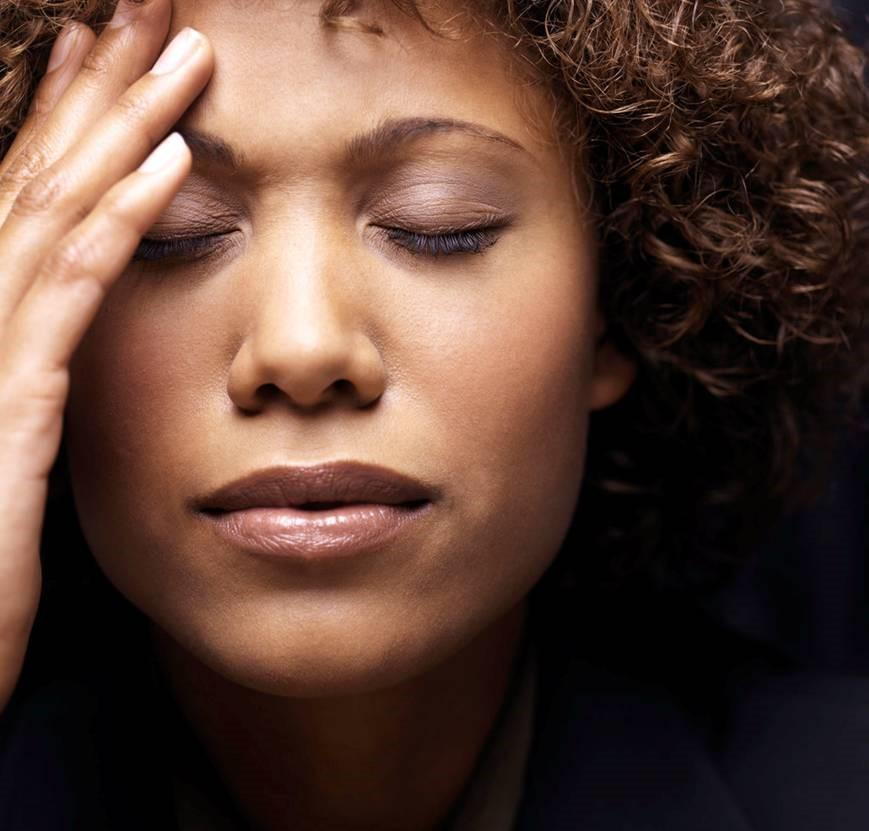Anxiety
posted: Jan. 20, 2021.

Anxiety in Women and Teens
Anxiety is the body's way of responding to overwhelmingly stressful situations. Public speaking and job interviews are both regular instants when someone feels anxious. It can help us achieve goals or meet deadlines and pushes us to do our best.
But if you experience anxiety frequently and notice it getting in the way of your day to day responsibilities, you may have an anxiety disorder.
Just like any other mental health disorder, anxiety can get in the way of socializing, working towards goals, and in severe cases, leaving your own home. If symptoms of anxiety are severe and left untreated, they can become debilitating and worsen over time.
Anxiety is a key part of the following conditions:
Panic Disorder: enduring recurring panic attacks at unforeseen times. A person with panic disorder may become extremely fearful of having another one.
Phobia: extreme or unreasonable fear of a specific thing, circumstance, or activity.
Generalized Anxiety Disorder: is defined by persistent and unreasonable worry about numerous different things. People with GAD may predict disaster and may be overly concerned about money, health, family, work, or other issues.
Social Anxiety Disorder: an intense and excessive fear of being judged by others in social situations.
Obsessive-Compulsive Disorder: recurring irrational and intrusive thoughts that lead to performing repeated, particular behaviors.
Separation Anxiety Disorder: a dread of being separated from family members or friends.
Post-Traumatic Stress Disorder (PTSD): anxiety following a traumatic event.
Symptoms of Anxiety Disorders
Anxiety disorders typically come with a variety of symptoms that everyone experiences differently. Symptoms commonly found in anxiety disorders include:
● Trouble sleeping
● Nausea or dizziness
● Dry mouth
● Feeling nervous or fearful
● Muscle tension or tightness
● Fast or irregular heartbeat
● Sweaty or freezing hands and feet
● Numbness or tingling
● Difficulty staying calm or sitting still
These symptoms are cues that there is something to fear or maybe a potential threat. Our natural stress response is built for this reason, but in anxiety disorders, this response is put into overdrive and can do more harm than good.
Anxiety in women
While no individual experiences anxiety the same as another, women tend to experience it more than men.
● Women also report more physical symptoms of anxiety, such as headaches, shortness of breath, and increased heart rate.
● Differences in brain chemistry and hormone fluctuations could also contribute to anxiety in women. Reproductive events across a woman’s life are associated with hormonal changes, which have been linked to anxiety.
● According to the ADAA, women tend to be more prone to stress, as the area of the brain responsible is more active. They also tend to cope with stressors differently than men.
Anxiety in teenagers
Anxiety disorders vary from teenager to teenager. It's not always clear when a teen is experiencing a normal amount of stress or an unhealthy amount of anxiety. An estimated 32% of teens between 13-18 experience an anxiety disorder throughout their adolescent years.
● In a social setting, anxious teenagers may appear dependent, withdrawn, or uneasy.
● They may present as overly restrained or emotional.
● Teens may be preoccupied with worries or unrealistic concerns about their social relationships.
● They may withdraw from their usual activities or refuse to engage in new experiences.
Treatment
Anxiety disorders are very treatable and can be treated with medication, psychotherapy, or a combination of the two. For those who experience mild symptoms, treatment may not be necessary. Working with a therapist can help you learn tools and strategies to cope with symptoms and ultimately live a happier, healthier life.
References
https://adaa.org/living-with-anxiety/women/facts#:~:text=The%20brain%20system%20involved %20in,responsiveness%20to%20stress%20and%20anxiety. https://www.nami.org/Your-Journey/Teens-Young-Adults https://www.apa.org/monitor/2017/03/anxious-kids#:~:text=Nearly%2032%20percent%20of%20 adolescents,and%20Adolescent%20Psychiatry%2C%202010).
